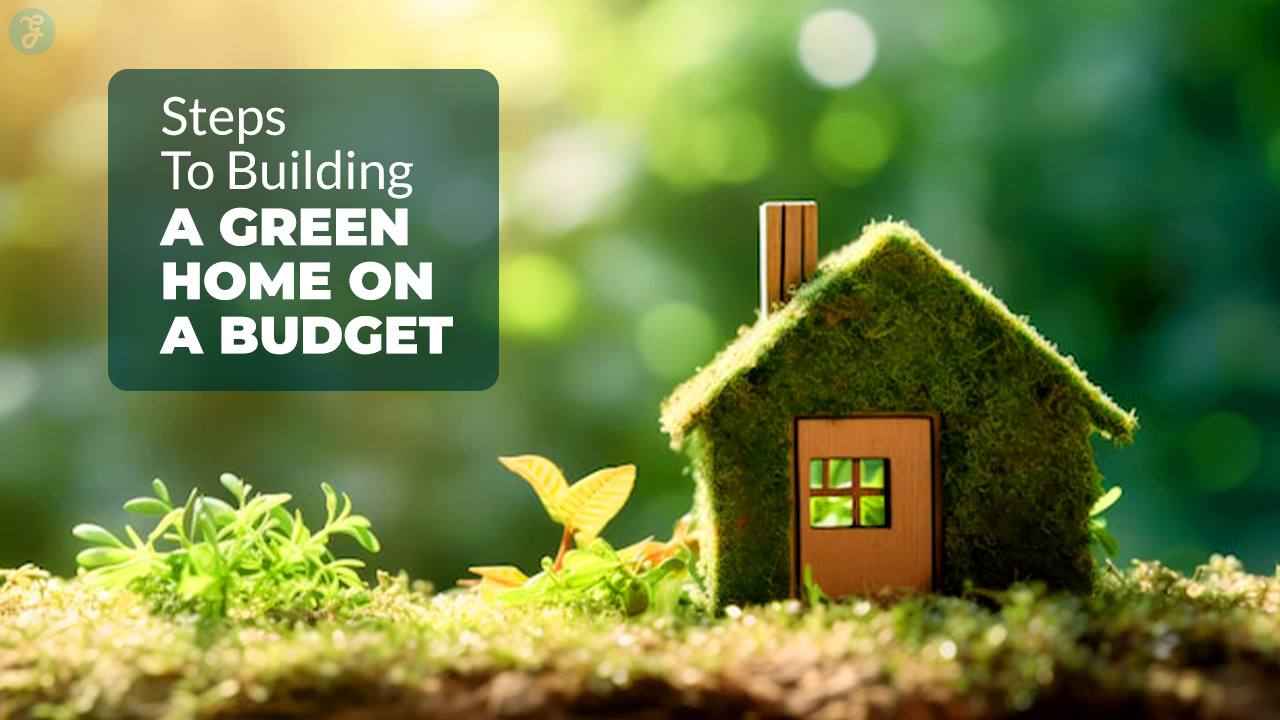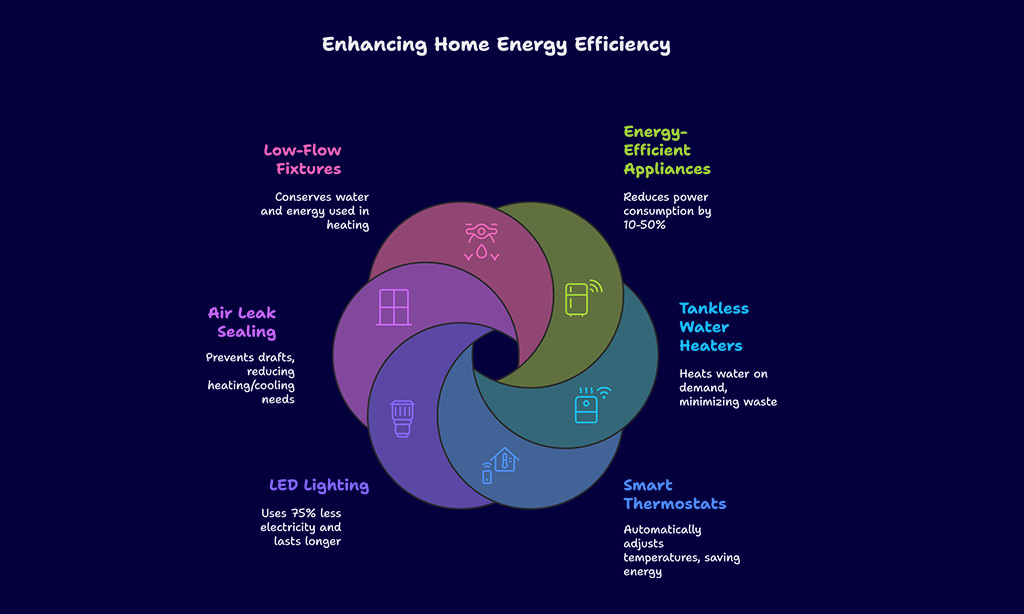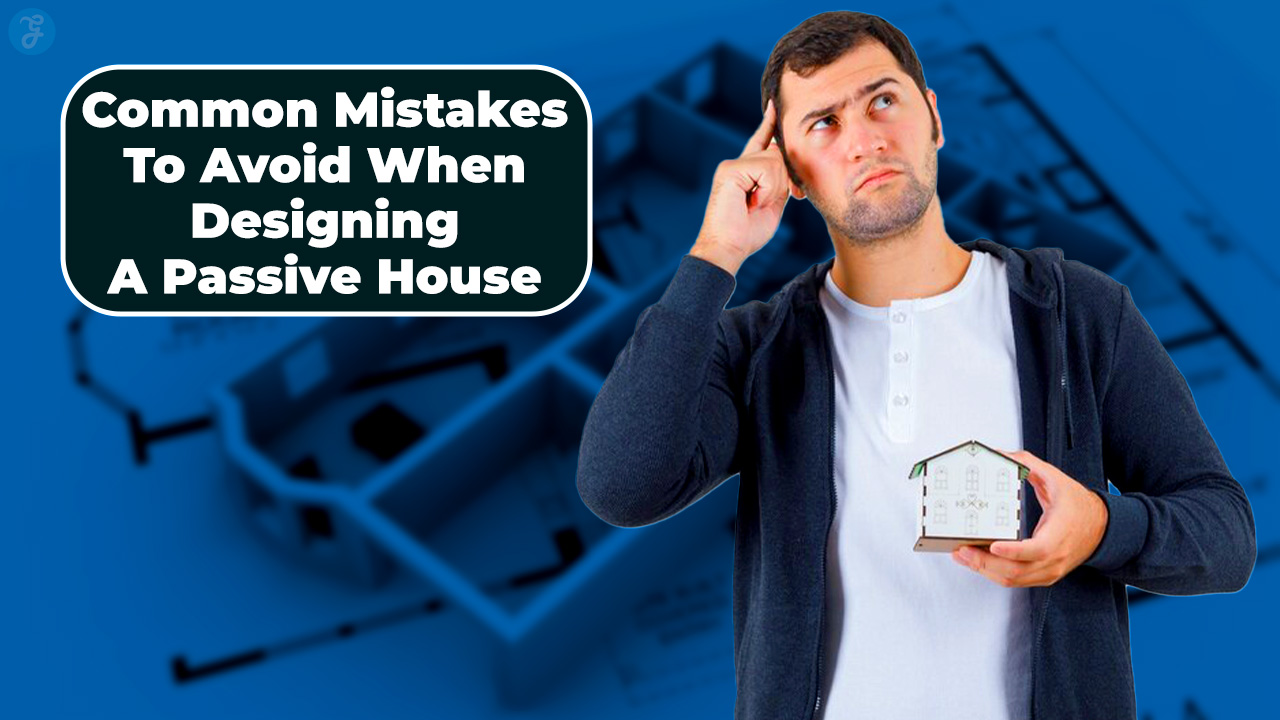Building a green home sounds expensive—but it doesn’t have be. Many people want an eco-friendly house but worry about costs. The good news? You can save money and the planet at the same time.
Start with an energy audit. It shows where your home wastes energy—and how you can fix it. These 10 steps will guide you through building a green home on a budget. Learn how smart insulation, energy-efficient windows, and solar power cut costs.
Ready for a greener, cheaper home? Keep reading.
Optimize Your Home’s Location and Design
Position your home to capture natural sunlight—this cuts heating costs and brightens rooms. Choose an open layout with cross-ventilation to reduce the need for fans or AC.
Pick materials like concrete floors or brick walls to store heat, keeping temperatures stable. Large south-facing windows boost solar gain in winter while shades block summer glare.
Consider orientation for natural light and ventilation
Smart placement boosts natural light—and cuts heating costs too! Face main living spaces north or south—sunlight floods rooms without overheating them during summer months…
Cross breezes keep fresh air moving if you align windows properly…
“Good design works with nature—not against it.”
Pick local trees or shades near west-facing walls—they block harsh afternoon sun yet allow winter warmth through efficient glazing. Sloped roofs? Add skylights over dark hallways…
Every small tweak adds up—fewer lights running means lower bills year-round!
Plan for energy-efficient layouts
Place living areas on the north and south sides of your home. This takes advantage of natural light and reduces heating and cooling needs. Position windows to capture sunlight in winter and shade them in summer.
Use an open floor plan to improve airflow and ventilation. This lowers reliance on HVAC systems. Keep bedrooms and storage spaces on the less sunny sides. Locate kitchens and living rooms where sunlight helps warm the space.
Simple changes in layout boost energy efficiency without extra costs.
Use Sustainable Building Materials
Choose recycled steel and aluminum for a sturdy, eco-friendly frame. Reclaimed wood and bamboo add natural warmth while cutting waste.
Opt for low-impact materials like cork or straw bale—they’re budget-friendly and earth-conscious. Salvaged bricks and recycled glass also reduce costs without sacrificing quality.
Recycled steel and aluminum
Recycled steel and aluminum are excellent green building materials. They reduce waste and cut energy use in home construction. Steel can be reused multiple times without losing strength—perfect for framing or roofing.
Aluminum, often salvaged from old windows or cans, works well for siding and fixtures. Both metals lower the need for mining raw materials, saving energy and reducing emissions.
Buying locally sourced recycled metal also cuts transportation costs. These materials resist pests and fire better than traditional wood—ideal for sustainable design. Look for reclaimed options at salvage yards to stay on budget while building an eco-friendly home.
Sustainable building with these metals supports zero-energy goals by improving insulation and durability against weather extremes like flooding or warmer climates.
Reclaimed wood and bamboo
Reclaimed wood adds character to your home while cutting waste. It’s durable, often cheaper than new lumber, and reduces the need for fresh timber—lowering deforestation. Bamboo grows fast, making it a sustainable alternative for flooring or furniture.
Both materials fit green building goals without breaking the budget.
Using salvaged materials like old barn wood keeps construction waste out of landfills. Bamboo’s strength rivals hardwood, and its rapid renewal makes it eco-friendly. Pair these with energy-efficient designs—like passive solar heating—for a low-cost, high-impact green home.
Opt for non-toxic finishes to keep indoor air clean.
Focus on Insulation and Sealing
Good insulation keeps your home warm or cool without wasting power—seal gaps with weatherstripping or spray foam fiberglass batting stops drafts fast!
An airtight building envelope cuts heating costs—use reflective barriers like radiant foil paired with dense cellulose insulation blocks heat loss through walls!
Super-insulate walls, roofs, and floors
Super-insulating walls, roofs, and floors keeps your home comfortable year-round while cutting energy costs. Use thick fiberglass batting or reflective insulation to block heat loss—this tightens the building envelope and stops air leaks.
Focus on key areas like attics and basements where drafts often sneak in.
A well-insulated home reduces strain on heating and cooling systems, saving money long-term. Pair it with energy-efficient windows for even better results. Locally sourced recycled materials can lower expenses without sacrificing performance—every layer counts toward a net-zero energy home.
Seal gaps for an airtight building envelope
Air leaks waste energy and drive up heating and cooling costs. Check around doors, windows, pipes, and electrical outlets—seal cracks with weatherstripping or caulk to keep conditioned air inside.
A tight building envelope helps insulation work better while lowering bills.
Gaps let drafts in and force HVAC systems to run longer. Focus on areas like attics, basements, and crawl spaces where air escapes easily. Proper sealing improves efficiency—combine it with good insulation materials for maximum savings year-round.
Simple fixes now prevent bigger expenses later.
Install Energy-Efficient Windows and Doors
Upgrade old windows—they frequently allow heat or cool air to escape due to poor insulation or drafts—and opt for double-pane models with ENERGY STAR® certification instead! These models help reduce unwanted solar heat gain because of their lower solar heat gain coefficient ratings, maintaining stable indoor temperatures without overburdening HVAC units during summer months.
Installing them on south-facing walls can be particularly effective, as these walls receive more sunlight throughout the year.
Consider doors made from recycled steel combined with fiberglass cores since both materials prevent thermal bridging more effectively than solid wood options and provide tighter sealing against outdoor elements.
Adding weatherstripping around the edges further prevents conditioned-air loss, helping you save money in the long run despite potentially higher upfront costs.
Use Renewable Energy Sources
Solar panels cut energy bills and reduce reliance on fossil fuels. Geothermal systems use the earth’s heat for efficient, year-round climate control.
Solar panels
Harnessing solar energy with photovoltaic panels cuts electricity costs and reduces reliance on fossil fuels. These systems convert sunlight into clean power—ideal for heating water and running appliances efficiently.
Choose locally sourced panels to save money, and pair them with smart thermostats for better energy savings. Proper placement—like south-facing roofs—maximizes sun exposure, boosting efficiency in zero-energy homes.
Geothermal heating systems
Geothermal heating systems tap into the earth’s steady underground temperature to heat your home efficiently. These systems use pipes buried deep in the ground to transfer warmth—no fossil fuels needed.
They slash heating costs and cut carbon emissions, making them a smart choice for sustainable energy.
Installing a geothermal system can be pricey upfront, but long-term savings on energy bills make it worthwhile. Pair it with smart thermostats for even better efficiency. Unlike traditional water heaters, geothermal systems provide consistent, climate-controlled comfort year-round.
They work best in homes with proper insulation—another step toward net zero energy living.
Select Energy-Efficient Appliances and Lighting
Switching to energy-efficient appliances cuts costs and reduces fossil fuel use. Look for ENERGY STAR-rated models—they use 10-50% less power than standard options. A tankless water heater heats only what you need, slashing energy waste.
Smart thermostats adjust temperatures automatically, saving up to 10% on heating and cooling yearly.
Replace old bulbs with LED lighting—it lasts longer and uses 75% less electricity. Fix air leaks around doors and windows to keep your home comfortable without extra work from air conditioning systems.
Choose low-flow fixtures for showers and sinks to save both water and the energy used in water-heating. Every small change adds up, making your home greener without breaking the bank.
Conserve Water with Smart Systems
Save water and cut costs with low-flow faucets, rainwater tanks, and smart irrigation—discover more ways to go green without breaking the bank!
Low-flow fixtures
Low-flow fixtures cut water use without sacrificing performance. They include faucets, showerheads, and toilets designed to reduce waste. These eco products can save thousands of gallons yearly—ideal for green affordable housing.
Opt for WaterSense-labeled models to ensure efficiency. Low-flow showerheads maintain strong pressure while using less hot water, lowering energy bills too. Pair them with rainwater harvesting for even bigger savings on waste removal and conservation.
Rainwater harvesting
Rainwater harvesting cuts water bills and boosts sustainability. Collecting rainwater reduces reliance on municipal systems—use barrels or tanks to store runoff from rooftops. This method works well with low-flow fixtures to maximize savings.
A simple setup includes gutters, filters, and storage containers. Rainwater can irrigate lawns, fill toilets, or wash clothes—keeping sewers and freshwater supplies less strained.
Pair it with smart thermostats and energy-efficient appliances for a full green home upgrade. Using salvaged materials for the system keeps costs low while supporting a zero net energy goal.
Incorporate Eco-Friendly Interior Design
Choose sustainable furniture like bamboo tables or recycled metal chairs—pair them with low-VOC paints…and create a stylish yet planet-friendly space!
Sustainable furniture and finishes
Furniture made from reclaimed wood or bamboo adds a green touch to your home. These materials reduce waste and lower costs. Look for non-toxic paints with low VOC levels—they keep indoor air clean.
Recycled steel and aluminum work well for modern, eco-friendly designs.
Opt for energy-efficient building materials like cork or recycled glass for floors. They last long and cut down on harmful emissions. Modular homes often use prefabricated parts, saving money and resources.
Pair these with LED lighting for a complete green lifestyle. Smart thermostats help manage energy use, making your space even more sustainable.
Use non-toxic paints and materials
Choosing non-toxic paints and materials keeps indoor air clean and safe. Low VOC paints reduce harmful emissions—better for your health and the environment.
Sustainable finishes like bamboo or reclaimed wood add eco-friendly style. These materials cut waste and lower exposure to volatile organic compounds. Pair them with biodegradable sealants for a greener home.
Takeaways
Building a green home on a budget is achievable with smart planning and small changes. Start by optimizing your home’s design—use natural light, pick sustainable materials, and seal air leaks for better efficiency.
Energy-saving upgrades like solar panels or low-flow fixtures cut costs while protecting the environment. Eco-friendly choices—reclaimed wood, LED lights, non-toxic paints—make a big difference without breaking the bank.
Every step adds up, from insulating walls to installing energy-efficient windows. Ready to make your home greener? Start small and watch the savings grow. A sustainable future begins at home—one smart choice at a time.
FAQs on Steps To Building A Green Home On A Budget
1. What are the key steps to building a green home on a budget?
Start with energy-efficient building design, use recycled materials, and install energy-saving appliances. Add solar photovoltaic panels for renewable energy and seal air leaks to improve efficiency.
2. How can I make my home more energy-efficient without spending too much?
Replace old windows with energy-efficient windows, install a smart thermostat, and use house plants for natural cooling. Fix air leaks and consider heat recovery ventilation to cut costs.
3. What are affordable ways to use renewable energy in a green home?
Solar photovoltaic [PV] systems and geothermal energy are great options. Prefabricated homes with built-in solar panels can also save money while reducing fossil fuel power use.
4. How do I choose sustainable construction materials for a budget-friendly green home?
Look for recycled materials, like reclaimed wood or masonry. LEED-certified products ensure sustainability, and junk removal services can help repurpose old materials.
5. Can a green home still be stylish and functional?
Yes. Use thermal mass for natural heating, add spiral staircases for space efficiency, and pick energy-efficient appliances. Smart thermostats and proper lawn care also boost curb appeal while saving energy.











































